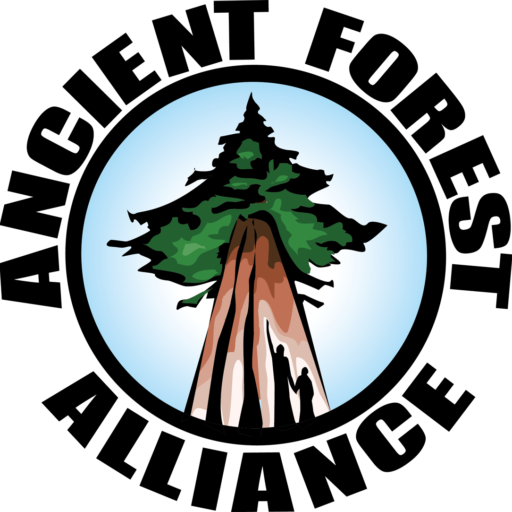BC Chamber of Commerce calls for increased old-growth forest protection in BC: "The resolution also called on the province to enact new regulations — incorporating such strategies as old-growth management areas, wildlife-habitat areas or land-use orders — with an eye on eventually legislating permanent protection through provincial park or conservancy status." While the chamber of commerce also continues to support the forest industry (which is now based primarily on second-growth stands for most of its cut), as it traditionally has for decades, for the organization's membership to also vote to expand protections for old-growth forests and thus "break through" the mold of the old 1990's land use plans (which cap protection levels on Vancouver Island at 13% of the landbase and about 6% of the productive forests) is a new thing - and a very positive leap forward!

The Economics of Protecting Old-Growth Forest: An Analysis of Spotted Owl Habitat in the Fraser Timber Supply Area of British Columbia
A 2008 study from SFU showed that old-growth forests in the southwestern mainland of BC are more valuable if left standing than if logged, based on their value for tourism, recreation, carbon, and non-timber forest products. Vancouver Island has even more old-growth forest tourism and carbon rich forests than the Fraser Timber Supply Area on the mainland where the study focused, and it's likely that any such economic analysis would show even stronger results for the economic case to protect our old-growth forests on the Island. See the study: https://davidsuzuki.org/publications/reports/2008/the-economics-of-protecting-old-growth-forest-an-analysis-of-spotted-owl-habitat/ And see the full resolution of the BC Chamber of Commerce calling for expanded protection of old-growth forests here:
https://ancientforestalliance.org/news-item.php?ID=1009
B.C. Chamber of Commerce hugs old-growth trees
BC Chamber of Commerce calls for increased old-growth forest protection in BC: "The resolution also called on the province to enact new regulations — incorporating such strategies as old-growth management areas, wildlife-habitat areas or land-use orders — with an eye on eventually legislating permanent protection through provincial park or conservancy status." While the chamber of commerce also continues to support the forest industry (which is now based primarily on second-growth stands for most of its cut), as it traditionally has for decades, for the organization's membership to also vote to expand protections for old-growth forests and thus "break through" the mold of the old 1990's land use plans (which cap protection levels on Vancouver Island at 13% of the landbase and about 6% of the productive forests) is a new thing - and a very positive leap forward!
Historic Leap for Old-Growth Forests – BC Chamber of Commerce Passes Resolution for Expanded Protection
Protecting Old-Growth Rainforests to the Economic Benefit of Tourism-Based Communities
Today, May 30, 2016, the BC Chamber of Commerce membership at their Annual General Meeting almost unanimously passed the following resolution calling on the provincial government to expand the protection of old-growth forests across the province where they have or would likely have greater economic value if left standing (this is true throughout most of the southern half of the province...):
Save the Walbran Tour Victoria
Have fun while supporting the protection of the endangered Walbran Valley this Friday, May 27th at the White Eagle Hall in James Bay as part of the Save the Walbran Tour! There will be great local musicians as well as information booths to learn more about how you can help out! Tickets $20 at Lyle's Place. The tour is being hosted by local organizers in conjunction with several non-profits and community initiatives. For more info see:. https://www.facebook.com/events/1102443283130908/
‘Insane Damage’: Activist Accuses Logger of Breaking Disclosure Law
The East Creek Rainforest near the Brooks Peninsula on NW Vancouver Island, until recent years was one of the most intact old-growth valleys left on the southern coast until LeMare and Lionsgate logging began clearcutting huge sections of its ancient forests. This is an ecological travesty.
ELF sets up new protest camp, wins backing from Sierra Club
The Elphinstone Logging Focus is working to stop a BC Timber Sales (a BC government-directed logging cutblock) cutblock in the biologically rich mature forests on the slopes of Mount Elphinstone near Gibsons: https://www.coastreporter.net/news/local-news/elf-sets-up-new-protest-camp-wins-backing-from-sierra-club-1.2263907 You can see their website here: https://www.loggingfocus.org/
Photo Gallery: Avatar Grove Boardwalk 2016 – New Entrance to Lower Grove
Over the May long weekend, a group of core boardwalk volunteers got together to complete a beautiful new entrance to the Lower Avatar Grove. This included a 10ft wide viewing platform with an incredible view overlooking the old-growth forest as well as a safe and long-lasting set of stairs leading off the road. Support the Ancient Forest Alliance boardwalk as we close in on the home stretch this summer!
The WestShore Chamber of Commerce Supports Port Renfrew’s Call for the Protection of the Central Walbran Valley’s Old-Growth Forest
Conservationists are delighted that the WestShore Chamber of Commerce, representing almost 400 businesses in the western suburbs of Victoria has issued a letter in support of the Port Renfrew Chamber of Commerce’s request to the province of British Columbia that it protect the Central Walbran Valley from old-growth logging.
Thank You to our Supporters for April’s Benefit Events!